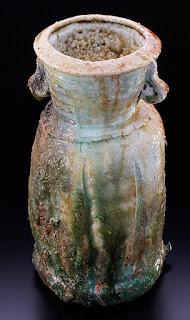We woke
early, though sleeping through the howling freight train gale of Sandy was
tenuous at best. Our quest was to go out and find some ice as we had been
without any electricity for nearly 12 hours and we had a freezer and frig full
of perishables. Ice and coffee secured, the winds now diminished, continue to
blow, spreading debris, leaves, branches, trees and misc. everywhere. As we
arrive back home, the sun is trying its best to peak through the angry clouds
with flocks of geese making their way southward as a solitary large badger
skulks back toward the woods, his nocturnal foraging interrupted by the
rudeness of Sandy.
We had
taken the precaution of packing the freezer with jugs of water, now frozen and
added bags of ice to the refrigerator, hoping that power will be restored soon.
All in all, despite downed trees; home, studio and car rode out the storm and
have fared well. The convoys of power grid bucket trucks and utility vans headed
east, give some solace that the power outage is being addressed. I am rather
tired of all the storms we have gone through in a number of locations and moves
ago and I am seriously wondering if there are any abandoned nuclear missile
silos within commute of my wife's work. After all, potters can work just about
anywhere.
(This was
written at 7am on the morning of 10/30/2012)
As a
postscript, the power finally came on at about 1pm (10/30). I had decided to begin
glazing on another kiln load of pots in the semi-darkness and the addition of
lights was more than appreciated. Food stuffs in freezer and frig also fared
well thanks to some careful planning. As one can imagine, life without
electricity has its pitfalls, but I must admit, I certainly got more stuff done
this morning than is normally possible with the distractions of computer, CD
player, TV and hot water!













